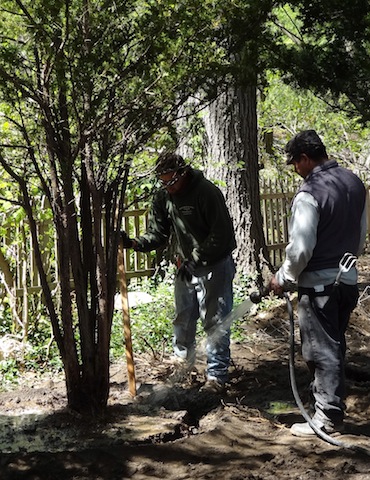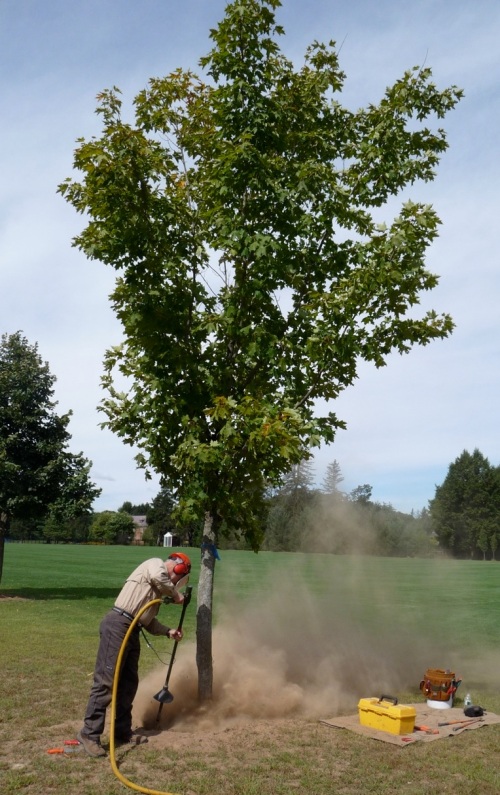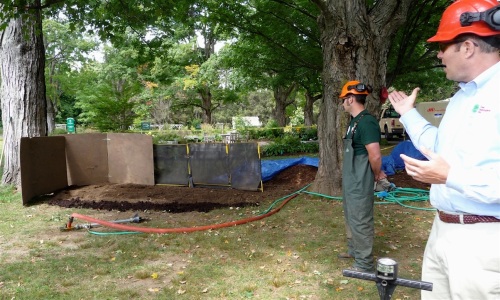…and go back to school for a day. If anyone in the Massachusetts woody-plants world has not seen the latest in tree- and shrub-planting techniques, here’s your chance: on September 27, Rolf Briggs and Matt Foti will be giving a workshop entitled At The Root: Air Tools Workshop at the New England Wild Flower Society’s Garden In The Woods. Matt and Rolf will discuss and show the best techniques for planting trees and shrubs fresh from the nursery (air tools not necessary for this), as well as how to use air tools to trench under trees, decompact soil, and transplant trees.
I have my reasons to promote this workshop (and it’s next-day partner, At The Root: Understanding and Managing Healthy Soils), and they center on the fact that every planting season I find myself coaching laborers on how to deal with the root balls of plants that we’re planting on my job sites. The boss, not knowing or having taught his laborers the proper planting techniques, usually has priced the work based on a quick installation (dig the hole, stick the plant in, cover up the root ball, basket, and burlap), and the laborers, knowing only the quick and dirty method, look sideways at me as I show them what I want them to do. The guys do the work the way I want it, but really, the process would go much more smoothly, and more landscapes would establish and grow in better, if everyone knew , priced, and carried out the work in what are considered the most plant-friendly ways.
Some of the most effective tools available to see what can be considered plant-friendly, and to work in soil crowded with roots, are pneumatic air tools. I believe that Rolf and Matt will be transplanting a tree bare-root, using air, which will afford workshop attendees a chance to see what a tree’s roots really look like when the soil is blown away. It’s an experience that can change how anyone working with plants understands how a plant grows and anchors itself, and for that alone this workshop is worth attending.











